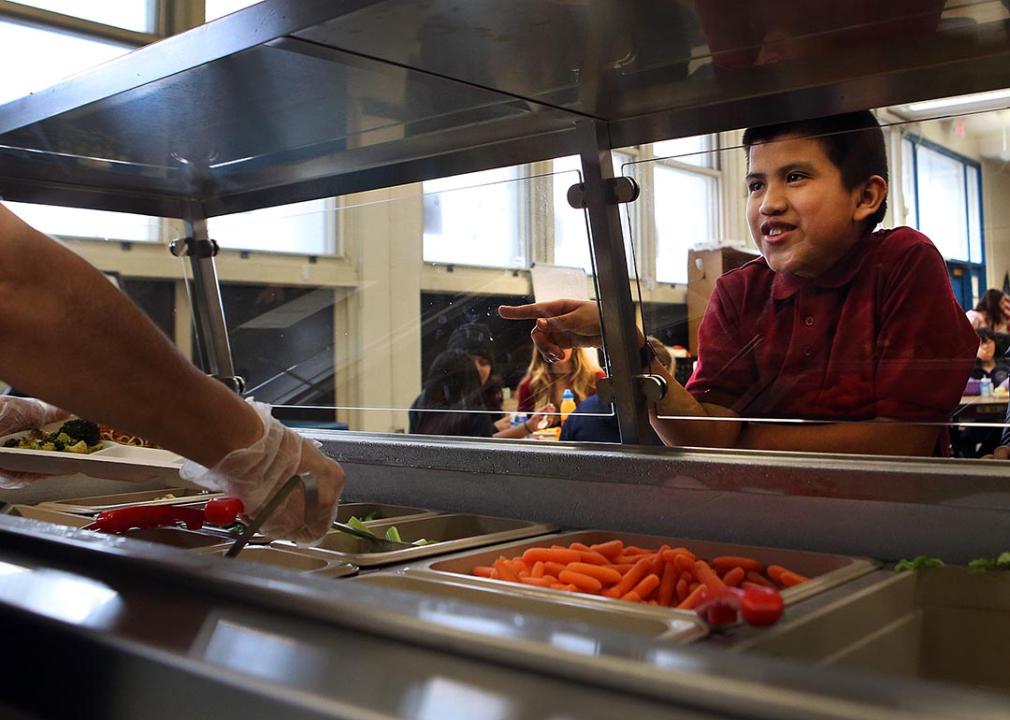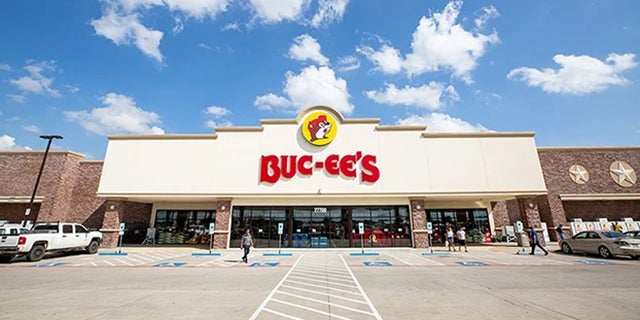Kids like free school meals. States are trying to reel in the costs.
Published 4:00 pm Friday, November 15, 2024
Kids like free school meals. States are trying to reel in the costs.
A few years ago, so few high schoolers ate breakfast in Vermont’s Essex Westford School District that the cafeteria looked like “a ghost town” in the morning, recalls Scott Fay, the director of child nutrition.
But now that breakfast is free for all students, kids are packing the cafeteria to talk, munch on fresh cranberry-orange bread, and finish homework before the first bell, Chalkbeat reports.
“It’s really amazing to see that transition,” said Fay, who helped lobby for the Vermont law that expanded free meals. That’s “what real equity looks like in our cafeterias,” he said. “It’s all these kids coming together in the morning, eating.”
The number of kids eating breakfast and lunch has jumped in the eight states that now have universal free school meals. The policy has attracted extra attention since Vice President Kamala Harris named Minnesota Gov. Tim Walz, who helped bring universal free school meals to his state, as her running mate.
Proponents say that the rise in participation is a success story because it means fewer kids are hungry at school and that families have more money to spend on groceries at home. But it’s also brought some logistical challenges and—perhaps more importantly—higher-than-expected costs. That’s raising concerns in some states about the long-term sustainability of these programs. In their first year of operation, universal free school meal programs came in over budget in at least six of the eight states that offer them.
And there may be a limit to how far universal meals can expand. There’s a federal bill in Congress, but so far the policy has passed only in Democratic-controlled legislatures. Republican-led states have generally opposed universal meals due to concerns about cost and parental responsibility.
“The Legislature has added $20-30 million in property tax pressure to pay for school meals for all students, including those from affluent families,” Vermont’s Republican Gov. Phil Scott said in a statement last year when he allowed the bill to pass into law without his signature. “This will be paid for by all Vermonters, including those with low incomes.”
Why Universal Meal Programs Cost More Than Expected
The main reason several states’ programs are over budget is that more kids ate breakfast and lunch than expected. Most of the kids who are new to eating for free would have paid full price in the past, and now states are picking up their tab.
Some states had a more sophisticated method for devising a budget, while others used estimates from the pandemic—when the federal government paid for all students to eat for free. That didn’t turn out to be great predictors of demand because so many kids were absent during that time. On top of that, the cost of food is high, and federal reimbursement rates for meals aren’t keeping up.
“Anytime you are trying something new and bold like this—and this is bold and big—it’s going to take a while to really get the modeling down of how much things cost,” said Alexis Bylander, who oversees child nutrition programs and policy for the nonprofit Food Research & Action Center. “We’re learning a lot from these states that are implementing first.”
When Michigan launched its program last school year, for example, the state budgeted $160 million, but needed an extra $30 million to cover the actual costs. This school year, the state budgeted $200 million.
New Mexico’s program ended up costing twice as much as the $20 million budgeted by state lawmakers. State education officials, who said they knew that estimate was too low, expect to spend $49 million this year.
Colorado’s program cost $162 million last school year. State lawmakers had to dip into state reserves to add $56 million after an unexpected shortfall.
Vermont lawmakers, meanwhile, allocated $29 million for the first year of their program, but the state needed less: only $24 million.
State officials say they are doing a lot to rein in costs, including signing up more schools for the federal program that reimburses for meals at the highest rate. That program recently expanded which schools are eligible. Colorado hired a consultant to help districts figure out steps they could take to get the most federal money possible, and formed an advisory group that’s working to lower state costs.
No state is looking to get rid of universal free school meals due to higher costs. But some officials are expressing worries about their fiscal impact.
Minnesota Sen. Zach Duckworth, a Republican who voted in favor of the law, told Minnesota Public Radio last month he worried about whether the state could afford its program long-term without a new revenue source. The state initially thought it would need around $200 million a year for universal meals, but costs came in around $40 million higher.
If the state can’t keep that up, he said, school districts may have to “pinch pennies” to fund their own programs.
Diane Golzynski, the deputy superintendent who oversees child nutrition for the Michigan Department of Education, worries that right now universal meals aren’t guaranteed in state law. That means they’re vulnerable to the annual budgeting process that could “rip this rug out from underneath the feet of our families,” she said.
Earlier this year in Vermont, where the program did not go over budget, the governor proposed repealing universal free school meals to save the state $20 million as part of a bid to curb an expected property tax hike. But that idea didn’t go anywhere.
Schools See Many Benefits From Universal Free Meals
Breakfast and lunch participation has continued to rise in several of the states that offer free meals to all students. That trend is especially notable because many other states were not able to sustain their pandemic-era participation rates and saw big drops when the national free meals provision ended.
When California, Maine, Massachusetts, and Vermont rolled out universal free meals during the 2022-23 school year, they saw increases in the average number of kids eating breakfast each day ranging from 8% to 13%. Students eating lunch went up by 4% to 7%, according to data compiled by the Food Research & Action Center.
States that launched universal meals more recently have seen similar upticks. New Mexico, for example, saw a 4% increase in kids eating breakfast and lunch last school year, state education officials said.
The increase in breakfast consumption is an especially big deal, educators and state officials say, because it can set kids up for success for the rest of their school day. Now, more schools put grab-and-go kiosks in the hallway, allow kids to eat breakfast in the classroom, or serve a “second chance” breakfast later in the morning.
“Breakfast and learning are so closely tied,” said Deanne Kelleher, Michigan’s director of health and nutrition services.
Her state has seen the biggest increase in breakfast consumption among middle schoolers, who often have an early start time but are too sleepy to eat before school.
Some research has found that universal free school meals can boost students’ test scores and attendance rates. They can also decrease stigma and bullying in the lunchroom.
Some schools have faced challenges stemming from serving more students, such as longer lines and kids not having enough time to eat. Some schools are considering longer lunch periods or limiting how many kids line up at once.
And though more kids eating for free can throw off the state budget, it generally means that at the district level, schools are taking in more money. That often means they can afford to cook more from scratch and offer more options to kids.
April Liles, the director of food services for Waltham Public Schools in Massachusetts, was able to use her extra funds to hire a part-time dietician who helps adapt meals for kids with gluten allergies or who need a vegetarian meal. Her high schools now offer 15 options for lunch each day—from a panini to a grilled veggie burger to a taco bar—to help guarantee kids can find something that meets their needs.
Rosie Krueger, Vermont’s director of child nutrition programs, said now that districts in her state have guaranteed revenue coming in and aren’t chasing after unpaid meal debt, they’re able to put higher food quality standards in their contracts. Instead of asking: “What is the bare minimum that you can offer for the lowest possible price?” she sees schools include requirements for more fruits, vegetables, and locally sourced food.
In the Essex Westford School District, Fay’s school nutrition budget typically ran a deficit of $70,000 to $100,000 before Vermont launched universal meals. Now he can afford to buy local beef to make homemade meatballs. Kids liked them so much that the kitchen staff got sore hands from all the scooping. With the extra funds, Fay was able to buy a $25,000 machine that could shape those meatballs more quickly.
The programs can also help families trust schools more. Fay found that when the district stopped calling families asking for unpaid meal debt, that school principals were able to get through to those families more easily to talk about things like their child’s behavior or support they could offer.
“The more phone calls we made collectively, made them less and less apt to pick up the phone when the school called,” Fay said. “It was driving a wedge between the district and some of those families who needed us the most.”
Will More States Offer Free School Meals to All?
Proponents of universal free school meals, like Bylander, say they don’t think the higher-than-expected price tags have deterred supporters or created new opposition to the policy.
“The people that really balked or were upset about the policy costing more than expected probably weren’t the people who strongly supported it to begin with,” she said.
Still, efforts to create a permanent universal free school meals program at the national level haven’t gone anywhere. And while former President Donald Trump approved the pandemic program that temporarily made school meals free for all, it’s unlikely he would support that again.
Other efforts to make pandemic-era policies that expanded the social safety net permanent have been polarizing.
When federal officials created a permanent Summer EBT program, for example, some Republican-led states said they didn’t want to pay the administrative costs or that their families didn’t need the extra food assistance.
Opponents often say the state shouldn’t cover the cost of feeding kids whose families can afford to pay and that limited state funds could be better spent elsewhere. Proponents counter that many families who do not qualify for free or reduced-price meals also struggle to afford food. This school year, a family of four that makes over $58,000 didn’t qualify for any school meal aid.
Some Republican-led states have taken steps toward expanding free school meals without making them universal. In South Carolina, Republican State Sen. Katrina Shealy was able to convince her colleagues to make previously reduced-price meals free, since it had a much smaller price tag than the universal program she initially wanted.
In South Dakota, House Rep. Kadyn Wittman, one of 11 Democrats in the state legislature, introduced a bill to make all school meals free, but that swiftly died in committee.
“I got my ass handed to me,” she said.
So she went back to the drawing board and built a coalition of school staffers and other advocates who lobbied lawmakers to support a different bill to make reduced-price meals free. That came with a price tag of around $630,000. But the bill still failed.
“I don’t think it was the price tag,” Wittman said. “There is still this belief that we should not be ‘raising other people’s kids.'”
Wittman is trying again. She plans to highlight the origins of the school lunch program—one of which was making sure kids were well-fed and healthy enough to defend the country in times of war—and how this financial investment could pay dividends later for academic achievement and attendance.
“How do you eat an elephant?” she said. “One bite at a time.”
![]()
This story was produced by Chalkbeat and reviewed and distributed by Stacker.






